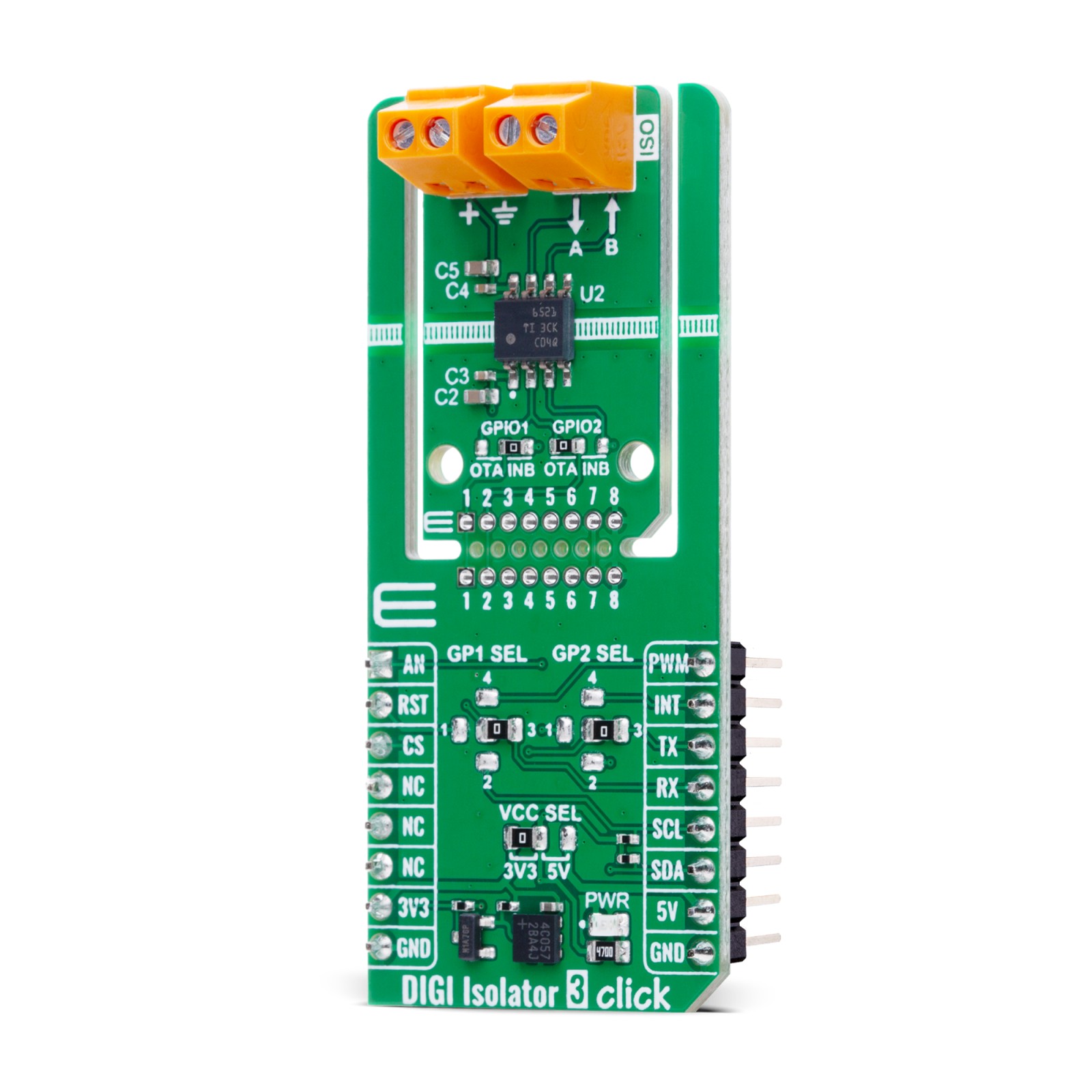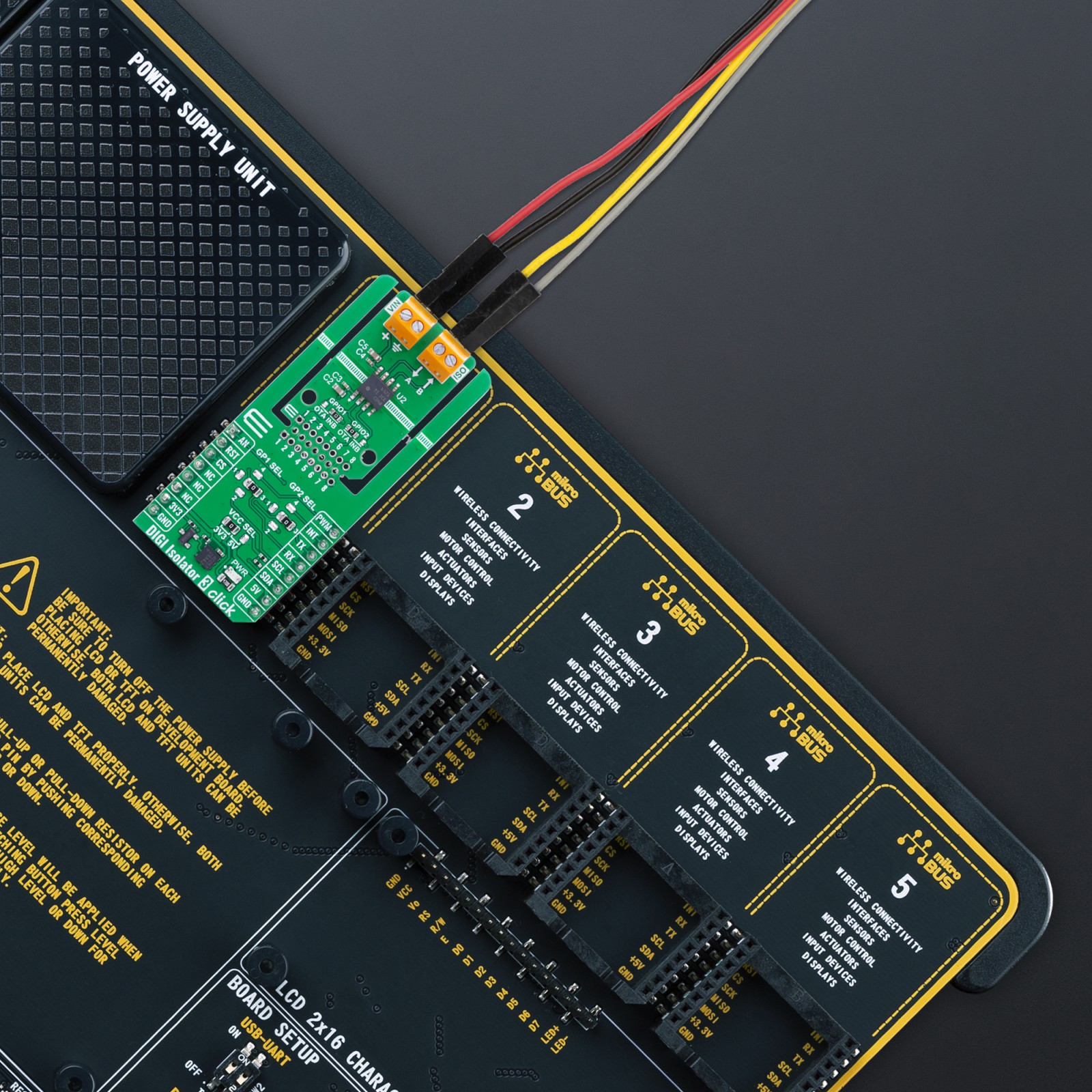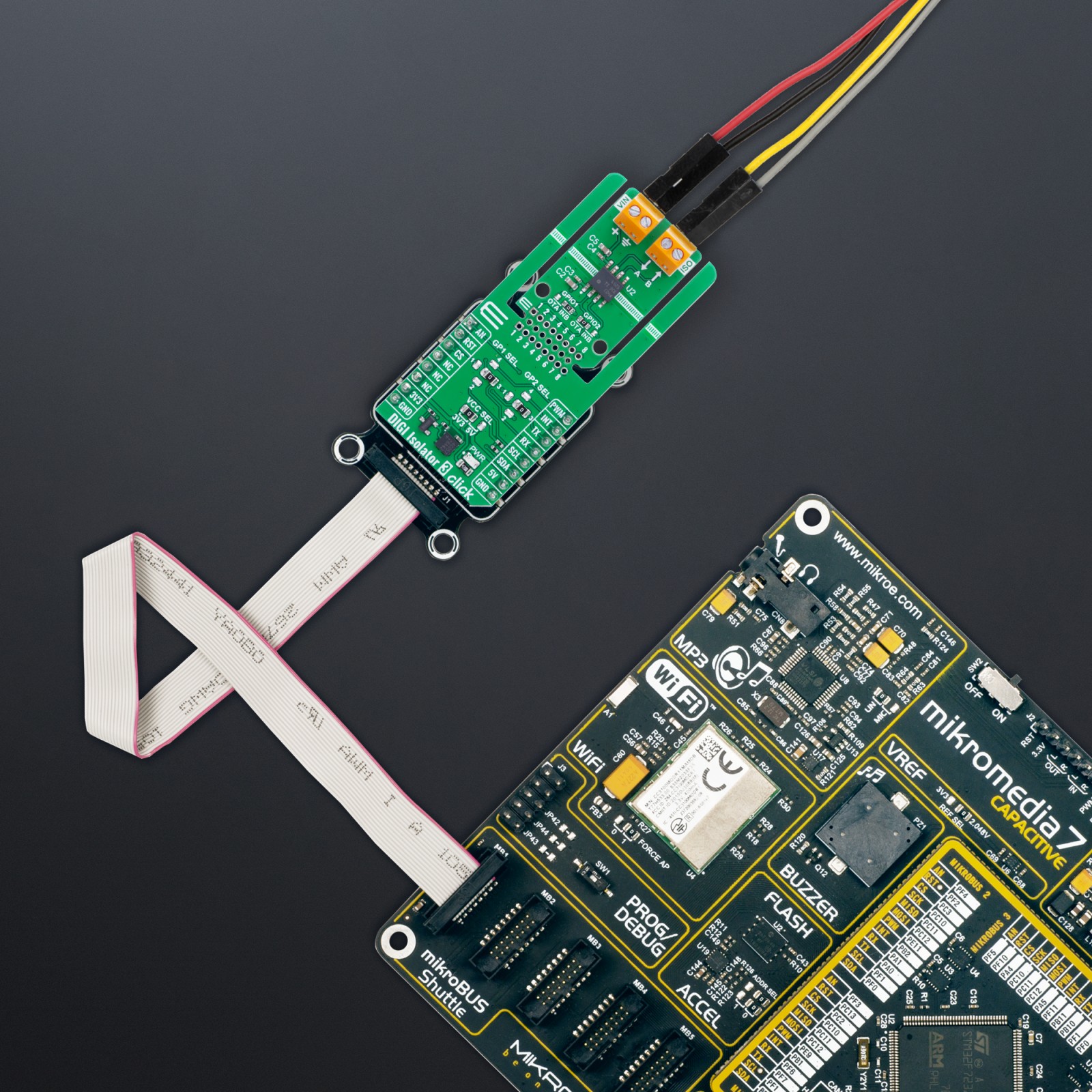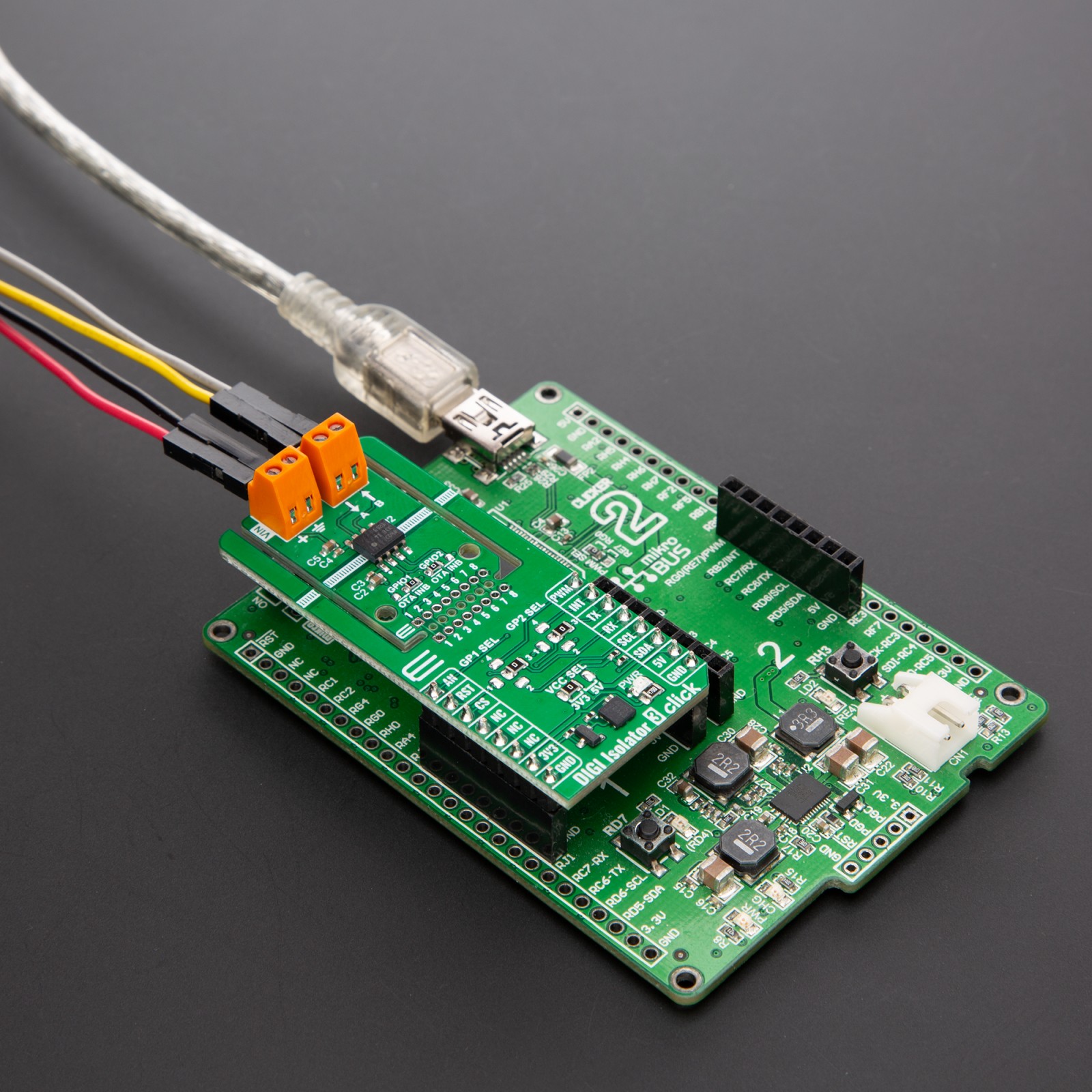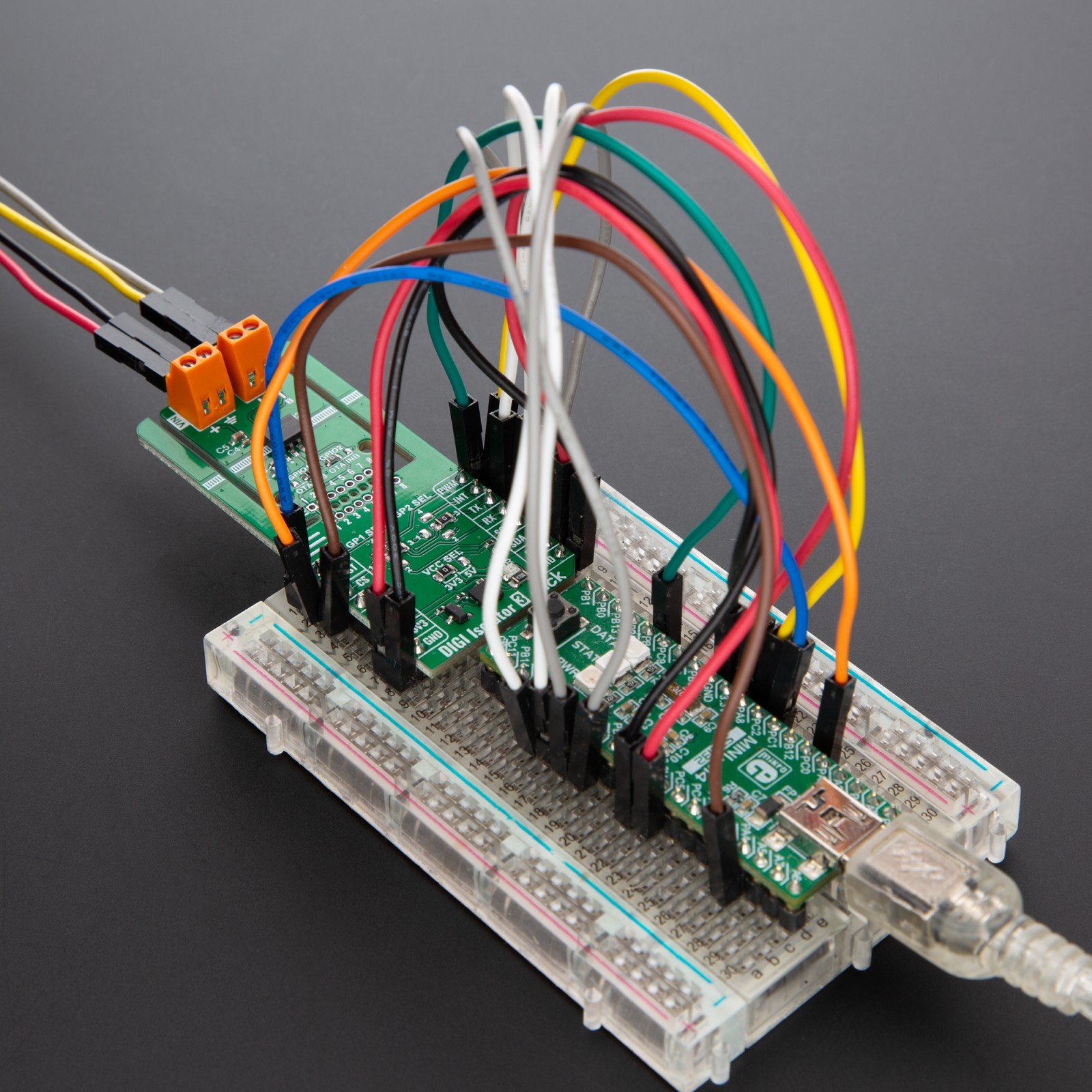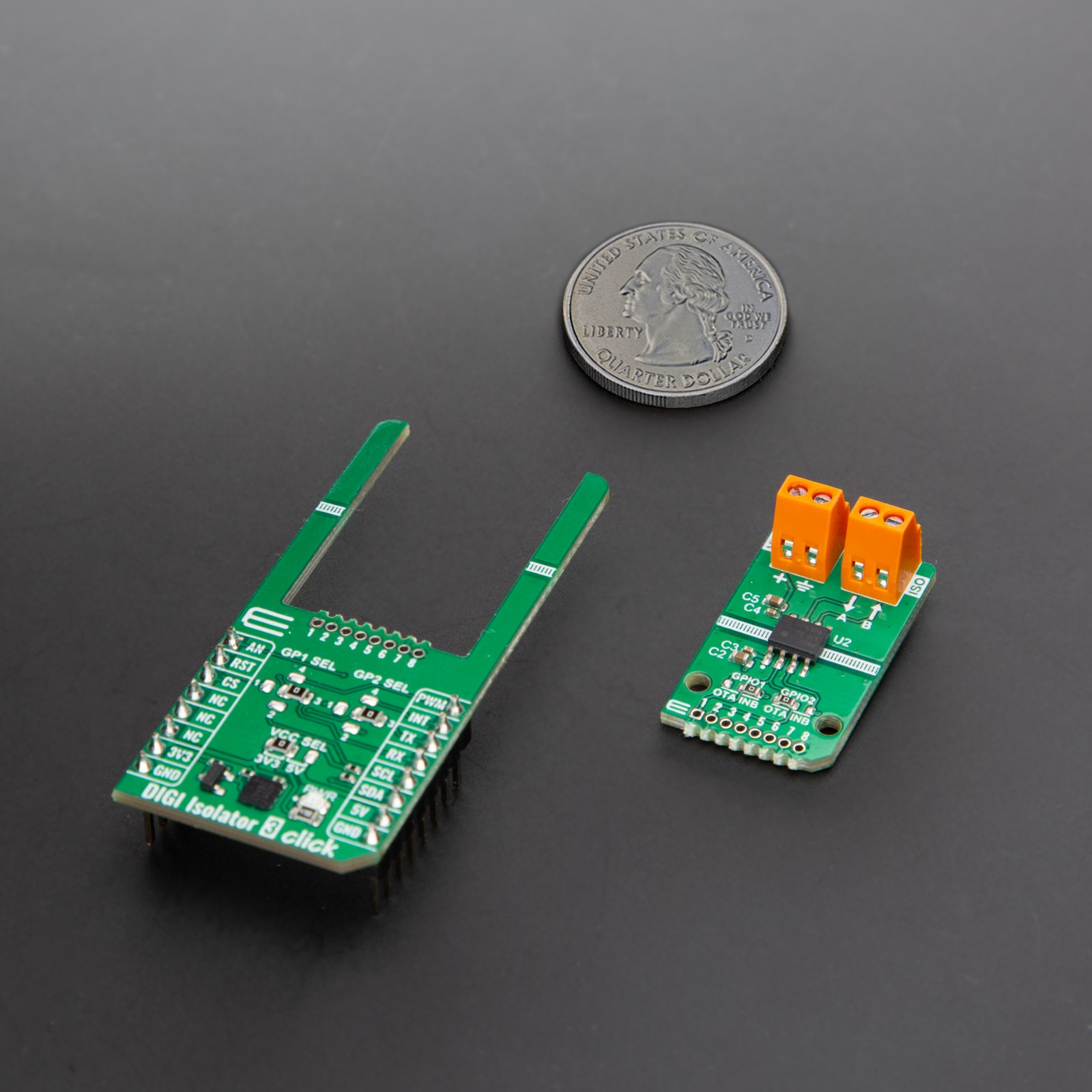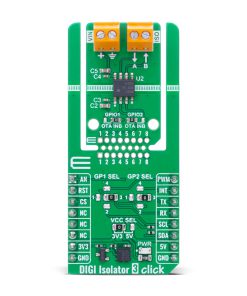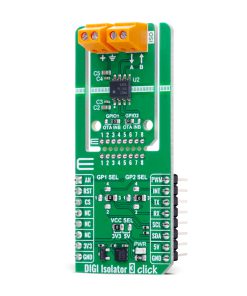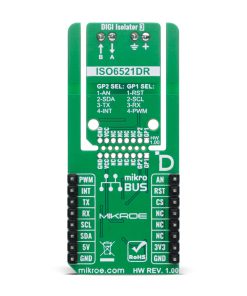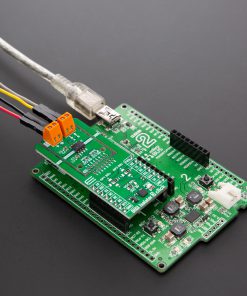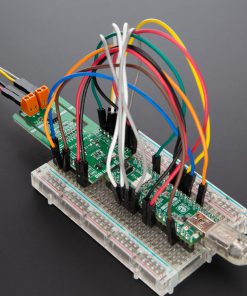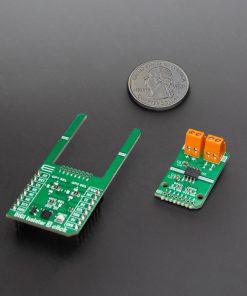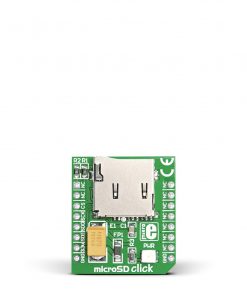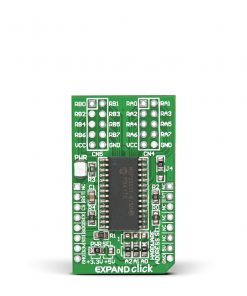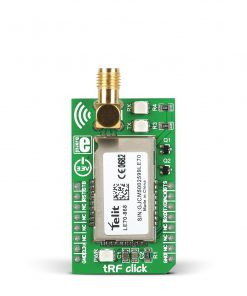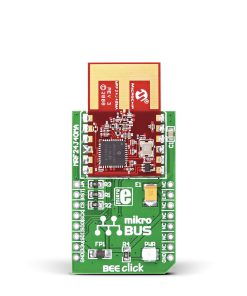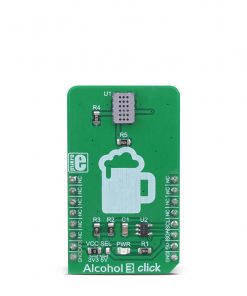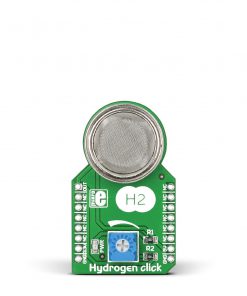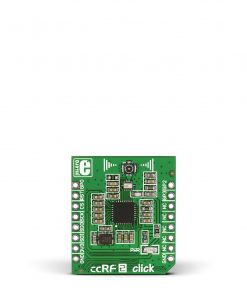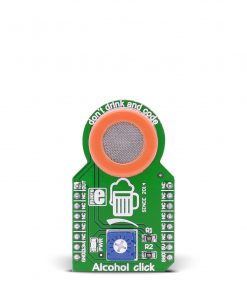DIGI Isolator 3 Click
R265.00 ex. VAT
DIGI Isolator 3 Click is a compact add-on board used for isolating digital signals between two circuit sections, ensuring protection and signal integrity. This board features the ISO6521, a dual-channel digital isolator from Texas Instruments, designed for general-purpose signal isolation in non-safety applications. The board features two unidirectional isolation channels, supports data rates up to 50Mbps, and operates with independent power supplies ranging from 1.71V to 5.5V. It offers strong immunity to electromagnetic interference, a default HIGH fail-safe output, and flexible signal selection via jumpers. DIGI Isolator 3 Click is ideal for applications such as power supplies, electricity meters, motor drivers, factory and building automation, lighting systems, and smart appliances.
DIGI Isolator 3 Click is fully compatible with the mikroBUS™ socket and can be used on any host system supporting the mikroBUS™ standard. It comes with the mikroSDK open-source libraries, offering unparalleled flexibility for evaluation and customization. What sets this Click board™ apart is the groundbreaking ClickID feature, enabling your host system to seamlessly and automatically detect and identify this add-on board.
Stock: Lead-time applicable.
| 5+ | R251.75 |
| 10+ | R238.50 |
| 15+ | R225.25 |
| 20+ | R216.77 |


